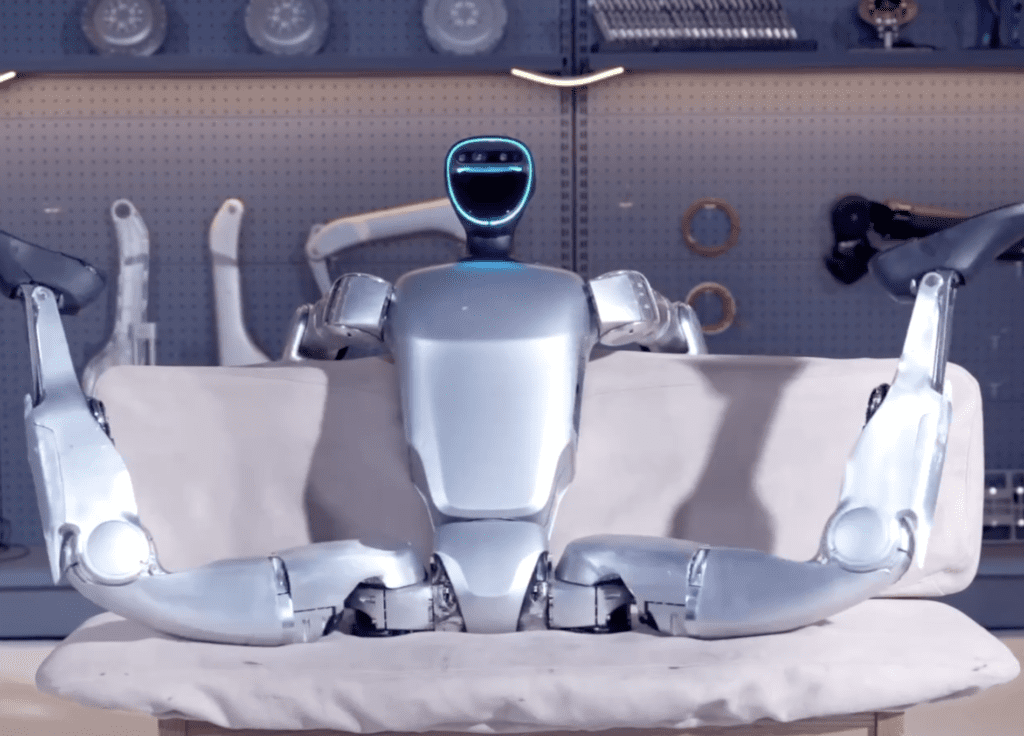Unitree G1 offers budget-friendly humanoid robotics with some limitations
- Affordable Humanoid Robot: The Unitree G1 is priced at $16,000, significantly lower than many competitors but comes with trade-offs.
- Impressive Capabilities: Despite its low cost, the G1 can perform basic movements and tasks, showcasing robust balance and resilience.
- Practical Limitations: The robot’s small stature and limited load capacity restrict its usefulness for many household tasks.
In the rapidly evolving world of robotics, Unitree has introduced the G1, a $16,000 humanoid robot aiming to make advanced robotics more accessible. Known for its budget-friendly alternatives, Unitree offers the G1 as an economical option for those interested in robotics, but it comes with notable limitations.
Affordable Humanoid Robotics
The Unitree G1 stands out primarily due to its price. At $16,000, it is significantly cheaper than many other humanoid robots on the market. For comparison, Unitree’s own adult-sized H1 robot is priced at $90,000. This affordability makes the G1 an attractive option for hobbyists, researchers, and educational institutions looking to explore humanoid robotics without breaking the bank.
Impressive Capabilities
Despite its low cost, the G1 has some impressive features. It can stand up from a lying position, balance itself, and withstand physical disturbances like kicks and punches. The robot’s ability to recover from such impacts demonstrates a high level of stability and resilience. The G1’s walk cycle, while somewhat primitive and characterized by a permanent half-squat, allows it to navigate various environments effectively. The robot is equipped with an Intel RealSense D435 depth camera and a Livox-MID360 lidar puck, providing it with solid vision capabilities for navigating and interacting with its surroundings.

Practical Limitations
However, the G1’s utility is limited by its small stature and modest capabilities. Standing at just 4’2″, the robot struggles to perform many household tasks that require reaching higher surfaces or carrying heavier loads. Its maximum load capacity is only 2 kg (about 4.4 pounds), which limits its ability to handle substantial objects. The battery life of two hours may also restrict its continuous operation, necessitating frequent recharges.
Moreover, potential users should be prepared for a significant amount of programming to make the G1 functional for specific tasks. While Unitree provides an SDK, detailed instructions and support may be sparse, requiring users to rely on existing documentation and community support.

Future Potential and Use Cases
The G1’s affordability and basic capabilities open up a range of possibilities. For educational purposes, it offers a hands-on opportunity for students to learn about robotics, AI, and programming. Researchers can use the G1 to experiment with humanoid robot applications and develop new algorithms for motion and balance.
In entertainment and advertising, the G1 could be employed for interactive displays and demonstrations, captivating audiences with its human-like movements. Additionally, small businesses and startups might find innovative ways to integrate the G1 into their operations, particularly in roles that require a mix of novelty and basic functionality.
The Unitree G1 represents an intriguing entry into the world of affordable humanoid robots. While it has clear limitations in terms of size and capability, its low price point makes it a viable option for those interested in exploring the potential of humanoid robotics without a significant financial investment. As technology continues to advance, it will be interesting to see how the G1 and similar robots evolve, potentially overcoming current limitations and finding new applications in various fields.
